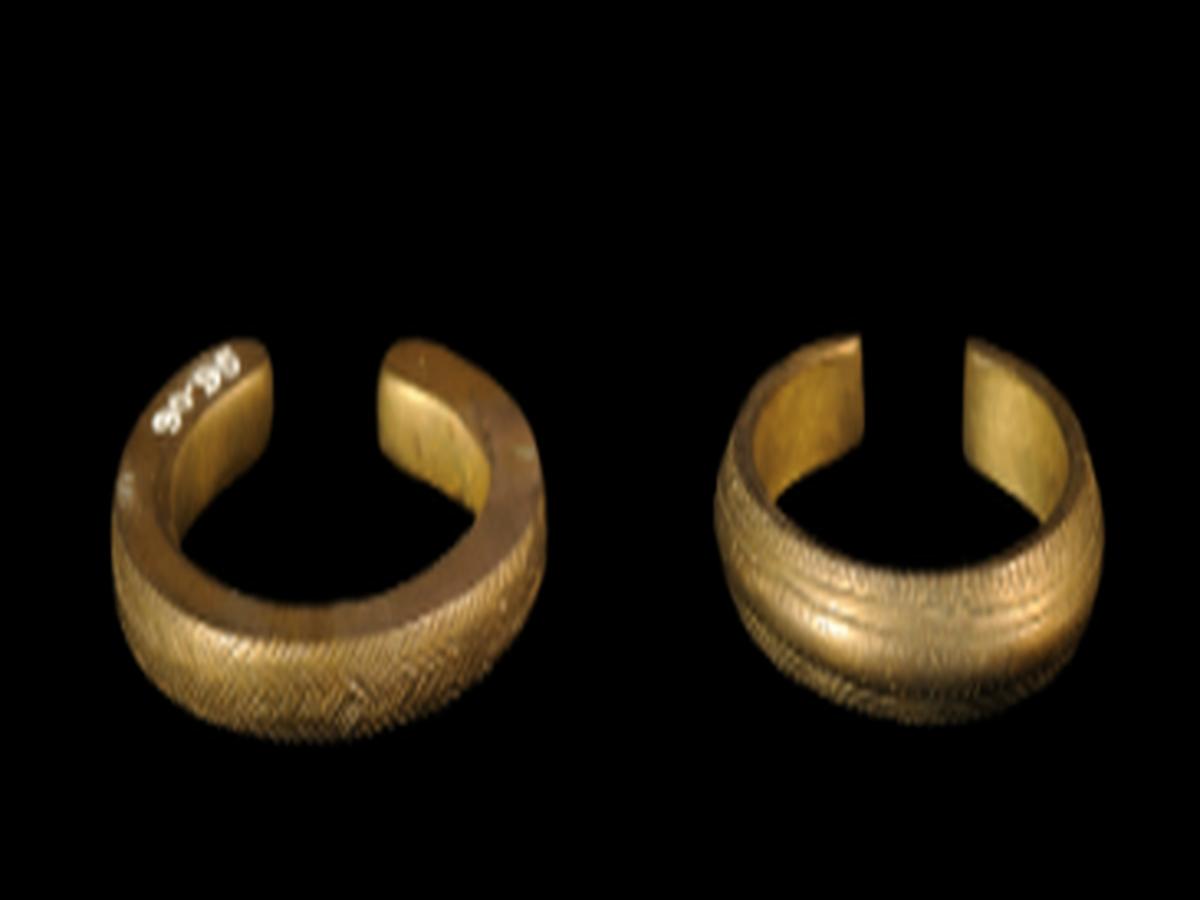State
Tribe Name
Art Type
short description
On the inside surfaces, though, it remains fairly plain in that it can easily be approached and worn comfortably by the user. Most often, these engravings symbolize either some natural elements or tribal mythology meanings or some even social markers within their community. These brass bracelets for Konyak society are not merely ornaments; they are the best outward manifestations of status, wealth, and identity. Brass, on the other hand, finds its worth by being trade acquired. It was really what these Indian brass ornaments represent when displayed or worn on certain big occasions, such as that of Aoleang, the Konyaks' New Year. Such jewelry is most often worn by women at occasions like An Annual Rite, The Other Celebrations, and Sacrifices. These objects-a pair of traditional bracelets belonging to the Konyak Naga of Nagaland, India-were made by pure brass with an amazing skill in metal-working honed through ages by the tribe. The bracelet is semi-circular, allowing a fairly wide gap between the ends for an easy slide on the wrist.
Thumbnail

Filter Postion
Left
Filter Background
Off
Theme
Filter Header Image

content
Image

description
On the inside surfaces, though, it remains fairly plain in that it can easily be approached and worn comfortably by the user. Most often, these engravings symbolize either some natural elements or tribal mythology meanings or some even social markers within their community. These brass bracelets for Konyak society are not merely ornaments; they are the best outward manifestations of status, wealth, and identity. Brass, on the other hand, finds its worth by being trade acquired. It was really what these Indian brass ornaments represent when displayed or worn on certain big occasions, such as that of Aoleang, the Konyaks' New Year. Such jewelry is most often worn by women at occasions like An Annual Rite, The Other Celebrations, and Sacrifices. These objects-a pair of traditional bracelets belonging to the Konyak Naga of Nagaland, India-were made by pure brass with an amazing skill in metal-working honed through ages by the tribe. The bracelet is semi-circular, allowing a fairly wide gap between the ends for an easy slide on the wrist.
While the outer surface of the bracelets displays elaborate engraving with geometric and linear designs, it exhibits the deep appreciation among the Konyak people with symmetry and symbolism in their artistic expression. However, the insides are left plain with comfort for the user in mind. Most times the engravings reflect either natural elements such as myths or tribal indicators of being in the community.Konyak Society considers brass bracelets more than mere ornaments. "They mark status, wealth, and identity." Brass, as the most important material, is somehow obtained through trade. In fact, possessing and showing such ornaments of brass on important occasions, mainly the Aoleang Festival, the Konyak New Year, were considered markers for wealth and glory. By men and women during such events as Festivals, Sacred Rituals, or even social aspects of the community would wear these ornaments. This pair of traditional bracelets belongs to the Konyak Naga of Nagaland, India, and is made from solid brass encompassing an amazing skill in metalworking practiced through ages by the tribe. Bracelet semi-circular in shape would allow a wide gap in between the two ends for easy sliding onto the wrist.
While the outer surface of the bracelets displays elaborate engraving with geometric and linear designs, it exhibits the deep appreciation among the Konyak people with symmetry and symbolism in their artistic expression. However, the insides are left plain with comfort for the user in mind. Most times the engravings reflect either natural elements such as myths or tribal indicators of being in the community.Konyak Society considers brass bracelets more than mere ornaments. "They mark status, wealth, and identity." Brass, as the most important material, is somehow obtained through trade. In fact, possessing and showing such ornaments of brass on important occasions, mainly the Aoleang Festival, the Konyak New Year, were considered markers for wealth and glory. By men and women during such events as Festivals, Sacred Rituals, or even social aspects of the community would wear these ornaments. This pair of traditional bracelets belongs to the Konyak Naga of Nagaland, India, and is made from solid brass encompassing an amazing skill in metalworking practiced through ages by the tribe. Bracelet semi-circular in shape would allow a wide gap in between the two ends for easy sliding onto the wrist.
Image Mode
landscape
promoted
On
Verified
Off
